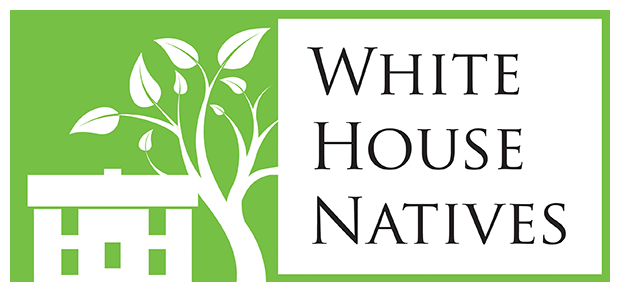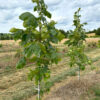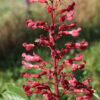
Cladrastis kentukea (American yellowwood) is possibly the most unique ‘native’ tree of eastern North America. ‘Native’ because its current range is primarily restricted to scattered outcroppings in the Ozarks and southern Appalachian highlands where it often grows on shady slopes in chalky, limestone-rich soils. Yet the versatility of this woodland specimen to other soil, light and climatic conditions as well as intriguing fossil clues hint at a much broader range before the last ice age covered much of the northeastern United States; a distribution from the Ozarks east to the Atlantic and north to the southern Great Lakes and the Hudson River Valley. Cladrastis itself is a very small genus; consisting of one species in North America and an additional eight in east Asia. It is closely related to another genus in the Fabaceae (pea/legume family), Styphnolobium, the pagodatree with which—unlike most legumes—it lacks the root/microbial symbiosis to fix nitrogen in the soil.
Whatever its past—or present—the yellowwood is an outstanding choice for smaller gardens.

As a landscape plant, Cladrastis kentukea typically matures at 35-50 feet in height with a broad, rounded crown of upright branches. The smooth, grey bark mimics that of Fagus grandifolia (American beech), only slightly darker in tone. The pinnate leaves, which resemble Juglans regia (English walnut) are 8-12” long with 7-11 leaflets and emerge a bright yellow-green maturing to dark green before turning a bright clear yellow in autumn. Once the tree reaches a decade or so in age, late spring also brings a mass of intensely fragrant white flowers in pendulous 8-14” racemes. Resembling Wisteria, the flowers are typically more numerous every second or third year. The flowers are followed by decorative 2-4” brown pods that persist late into the winter. Cladrastis tolerates a wide variety of soils, but prefers sun or very light shade and ample moisture when young; as it matures, water becomes less of an issue. The tree is deep-rooted, making it suitable for planting near sidewalks and patios; the deep roots also allow shrubs or perennials to grow under the canopy. Pruning should be conducted in late winter, before the sap begins to rise as yellowwood tends to ‘bleed’ profusely, like many maple species.

The common name yellowwood refers to the bright yellow heartwood of the tree; this heartwood yielded an intense yellow dye used by both native Americans and early Appalachian settlers. Native Americans also used the wood for building and figurative carving, while early settlers prized it for gunstocks. Today, the wood is used for decorative items and woodturning. The flowers yield abundant nectar and are a favorite of honeybees.

Cladrastis kentukea is relatively pest-free; with only scattered instances of borers or Verticillium wilt. Its main weakness is its somewhat brittle wood (hence the genus name: from Greek kládos/κλάδος ‘branch’ and thraústos/θραύστως ‘snap’ or ‘brittle’), so siting in a somewhat sheltered location is preferred. The tree can also be damaged by heavy ice storms. It also has a tendency to be low-branched, a problem easily corrected in youth by White House Natives’ rigorous pruning program. We supply Cladrastis kentukea in a range of sizes including 2”, 2½” and 3” caliper. We strongly encourage you to make Cladrastis a regular feature of the urban gardens you design and plant. You will not be disappointed!





